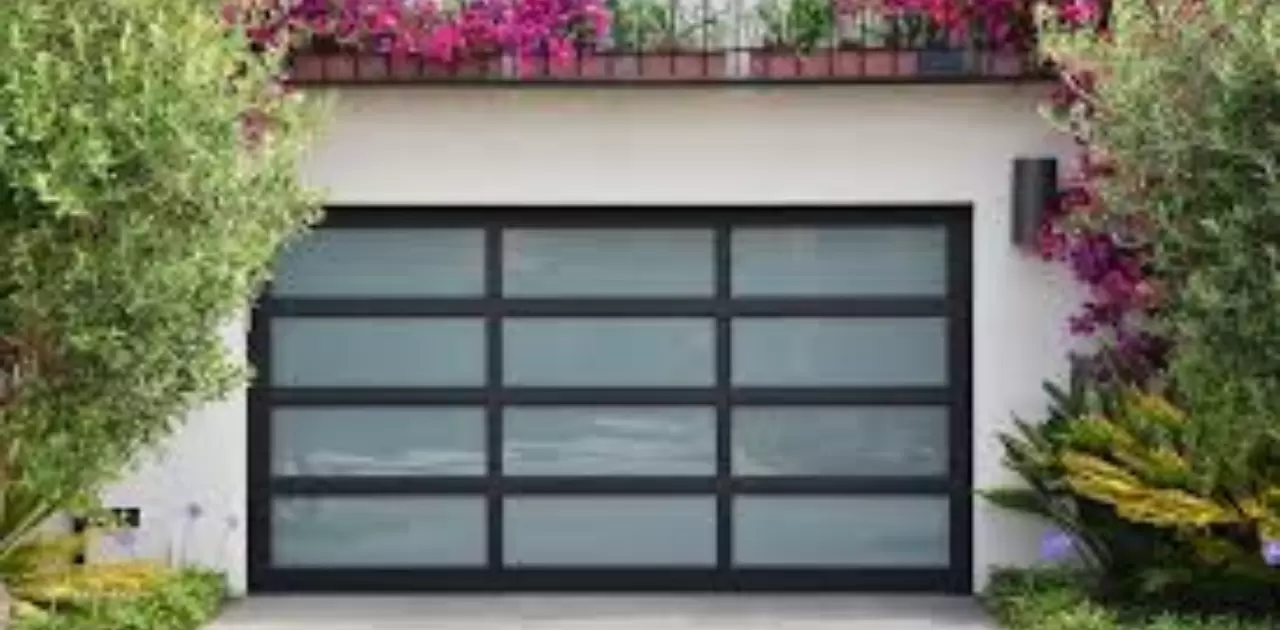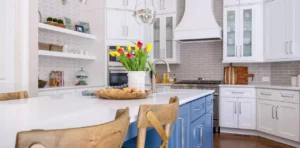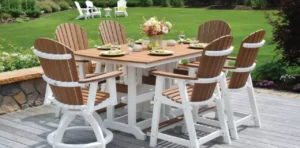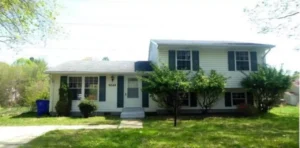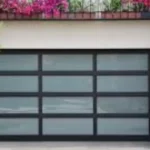Assessing Your Garage Space
First things first grab a tape measure and get to know your garage intimately. You will need to measure:
- Width of the opening
- Height of the opening
- Headroom (space above the opening to the ceiling)
- Backroom (space from the opening to the back wall)
Pro tip: Add an extra inch to your measurements. It is better to have a little wiggle room than to find out your new door is too snug to fit.
Considering Your Climate
If you are in Minnesota you will need to think about insulation. Here is a quick rundown:
| Climate | Recommended Features |
| Hot | UV-resistant materials, light colors |
| Cold | High R-value insulation, weatherstripping |
| Humid | Moisture-resistant materials |
| Coasta | Corrosion-resistant hardware |
Matching Your Home’s Style
Your garage door can take up to 30% of your home is facade. That is a lot of curb appeal real estate! Think about your home’s architecture:
- Colonial: Consider a classic raised panel door
- Craftsman: Carriage house doors complement this style beautifully
- Modern: Sleek, minimalist designs with lots of glass
Setting a Budget
Garage doors can range from about $500 to over $10,000. Set a realistic budget, but remember – this is an investment in your home’s value and security.
Types of Garage Doors
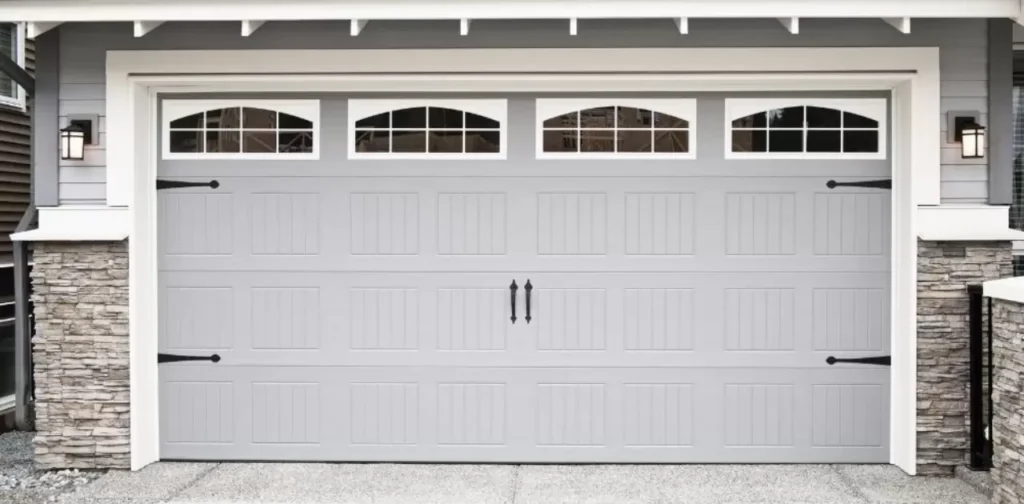
Now, let’s get into the meat and potatoes of garage door types. There’s more than one way to skin a cat (not that we’re advocating cat-skinning), and there’s more than one way to open a garage.
Sectional Doors: The Popular Choice
Sectional doors are the bread and butter of garage doors. They’re made up of panels that roll up along tracks tucking neatly under your garage ceiling. They’re versatile, reliable, and come in a variety of styles.
Pros:
- Space-efficient
- Wide range of designs
- Can be insulated
Cons:
- Require regular maintenance of springs and tracks
Roll-Up Doors: Space-Saving Wonders
If you’re tight on space, roll-up doors might be your new best friend. These doors roll around a drum above the opening, making them perfect for garages with limited headroom.
Pros:
- Great for small spaces
- Durable and low-maintenance
Cons:
- Limited design options
- Can be pricey
Slide-to-Side Doors: Perfect for Low Ceilings
Slide-to-side doors could be your saving grace. These doors slide along a track at the top and bottom of your garage opening, moving to one side.
Pros:
- Ideal for garages with low ceilings
- No springs to maintain
Cons:
- Require space along one side of the garage
- Limited availability
Tilt-Up Doors: A Classic Option
Tilt-up doors are the OGs of garage doors. They’re made of a single panel that tilts out and up into the garage. While they’re less common these days, they still have their charm.
Pros:
- Simple mechanism
- Can be very aesthetically pleasing
Cons:
- Require a lot of driveway space
- Not as secure as other options
Material Matters: Picking the Perfect Garage Door Material
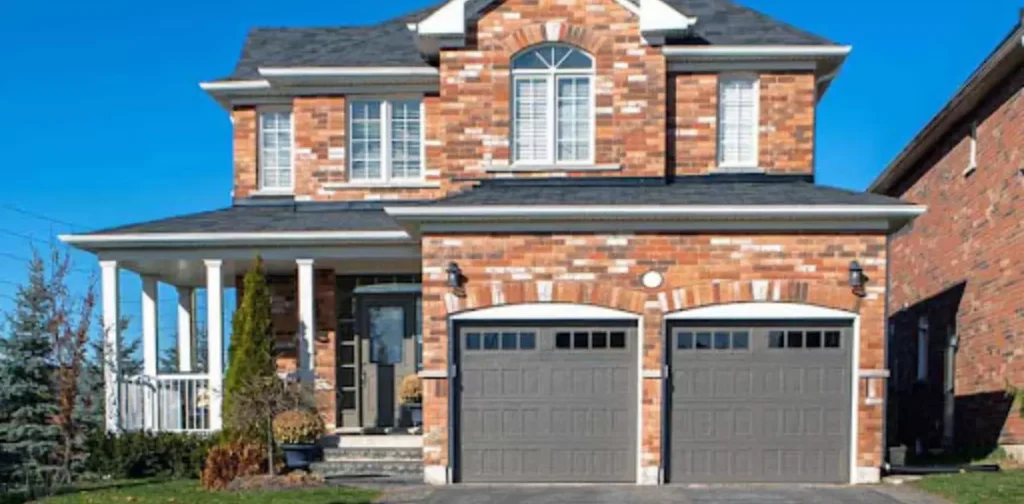
Choosing the right material for your garage door is like picking the right outfit for a first date – it’s all about making a good impression while being practical.
Steel: Strength Meets Style
Steel doors are like the Swiss Army knives of garage doors – versatile, durable and able to take a beating.
Pros:
- Strong and secure
- Low maintenance
- Can be insulated
- Variety of styles and colors
Cons:
- Can dent
- May rust if the finish is damaged
Wood: Timeless Charm with a Catch
Wood doors are the George Clooneys of the garage door world – they get better with age, but they need a bit of maintenance to keep looking good.
Pros:
- Beautiful natural look
- Can be customized
- Good insulator
Cons:
- Requires regular maintenance
- Can warp or rot if not properly cared for
- More expensive
Aluminum: Lightweight and Modern
Aluminum doors are perfect for those who want a modern look without the heavy lifting.
Pros:
- Rust-resistant
- Lightweight
- Modern appearance
Cons:
- Can dent easily
- Not as insulating as other materials
Fiberglass: Durable and Low-Maintenance
Fiberglass is like that friend who’s always reliable and never causes drama.
Pros:
- Resistant to saltwater corrosion
- Low maintenance
- Can mimic wood grain
Cons:
- Can fade over time
- Not as insulating as other materials
Vinyl: Budget-Friendly and Resilient
Vinyl doors are the underdogs of the garage door world – they’re affordable, tough, and might just surprise you.
Pros:
- Dent-resistant
- Low maintenance
- Affordable
Cons:
- Limited color options
- Not as strong as steel or wood
Recommended Blog: Layering Rugs and Throws: A Guide to Cozy Boho Bedroom Decor
Insulation: More Than Just Keeping Warm

Insulation is not just about keeping your garage cozy it is about energy efficiency, noise reduction and even structural integrity.
R-Value Explained
R-value is a measure of thermal resistance. The higher the R-value, the better the insulation. Here’s a quick guide:
| R-Value | Insulation Level |
| 0-6 | Poor |
| 7-9 | Good |
| 10-13 | Excellent |
| 14+ | Superior |
Benefits of Insulated Garage Doors
- Energy efficiency
- Noise reduction
- Increased durability
- Climate control for temperature-sensitive items
Choosing the Right Insulation for Your Climate
- Cold climates: Opt for R-values of 10 or higher
- Moderate climates: R-values between 7-9 should suffice
- Hot climates: Even a lower R-value can help keep heat out
Safety Features: Protecting What Matters Most
Your garage door is like a bouncer at a club – it needs to keep the bad stuff out while letting the good stuff in. Here are some safety features to look for:
Auto-Reverse Mechanisms
This feature causes the door to reverse direction if it encounters an obstacle while closing. It’s like having a guardian angel for your car (and your kids, and your pets).
Pinch-Resistant Designs
These doors have specially designed panels that push fingers out of the way if they get too close. It’s like having a polite door that says, “Excuse me, fingers!”
Manual Release Handles
In case of a power outage, you will want a way to open your door manually. Look for a bright red handle – it is your garage door’s.
Emergency exit
Smart Security Options
From fingerprint recognition to smartphone controls, modern garage doors can be as smart as your phone. Some even send you alerts if your door is left open.
Design Elements: Making Your Garage Door Pop
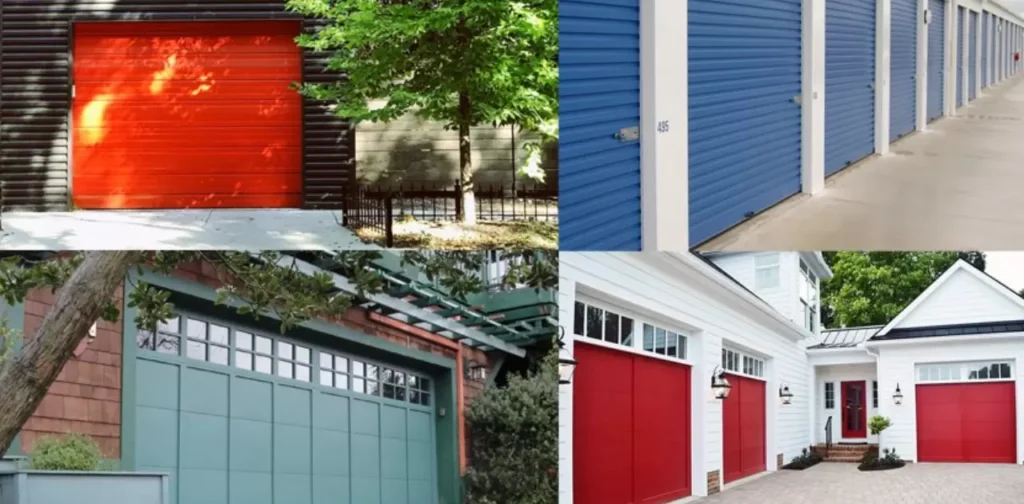
Your garage door does not have to be boring. It’s a chance to express yourself and boost your home’s curb appeal.
Window Options and Placement
Windows can add light and style to your garage. Consider:
- Long rectangular windows: For a modern look
- Small square windows: For a traditional feel
- Frosted glass: For privacy with light
Color Choices and Trends
While white is classic, don’t be afraid to go bold. Some trending colors include:
- Charcoal gray
- Deep blue
- Sage green
Pro tip: Choose a color that complements your home’s exterior, not matches it exactly.
Hardware and Decorative Accents
Handles, hinges and other hardware can add a finishing touch to your door. For a cohesive look, match these to other exterior hardware on your home.
Customization Possibilities
From custom carvings to unique panel designs, the sky’s the limit when it comes to customization. Just be prepared for the price tag that comes with bespoke designs.
Garage Door Openers: The Unsung Heroes
A garage door opener is like a good DJ – it keeps things moving smoothly and you only notice it when something goes wrong.
Chain Drive vs. Belt Drive vs. Screw Drive
- Chain Drive: Affordable and reliable, but can be noisy
- Belt Drive: Quiet and smooth, but more expensive
- Screw Drive: Low maintenance, but can be slower
Horsepower Considerations
- 1/2 HP: Good for most residential single doors
- 3/4 HP: Better for heavier doors or frequent use
- 1+ HP: Best for large, heavy doors or commercial use
Smart Features and Connectivity
Modern openers can connect to your home’s Wi-Fi, allowing you to control your door from anywhere. Some even work with voice assistants like Alexa or Google Home.
Backup Power Options
Consider an opener with a battery backup. It is like having a spare key for when the power goes out.
Installation: DIY or Professional?
Installing a garage door is not rocket science but it is not exactly a walk in the park either.
Pros and Cons of DIY Installation
Pros:
- Can save money
- Sense of accomplishment
Cons:
- Time-consuming
- Potential for injury
- May void warranty
When to Call in the Experts
Call a pro if:
- You are not comfortable with heavy lifting
- Your garage has non-standard dimensions
- You’re installing a custom or complex door
What to Expect During Professional Installation
A professional installation typically takes 3-5 hours. They will remove the old door, install the new one, and make sure everything’s working smoothly.
Recommended Blog: What is the height of an average house in the USA?
Maintenance and Care: Keeping Your Garage Door in Top Shape
Like a car, your garage door needs regular TLC to keep it running smoothly.
Regular Inspection Checklist
- Check and tighten hardware
- Test the door balance
- Inspect cables, pulleys and rollers
- Listen for any unusual noises
Lubrication Tips
Use a silicone-based lubricant on moving parts every six months. It is like giving your door a spa day.
When to Replace Weatherstripping
Replace weatherstripping when you see cracks, gaps or feel drafts. It is an easy DIY job that can make a big difference in energy efficiency.
Troubleshooting Common Issues
- Door won’t close: Check the photo eye sensors
- Noisy operation: Lubricate moving parts
- Door is off-track: Call a professional immediately
Cost Considerations: Budgeting for Your New Garage Door
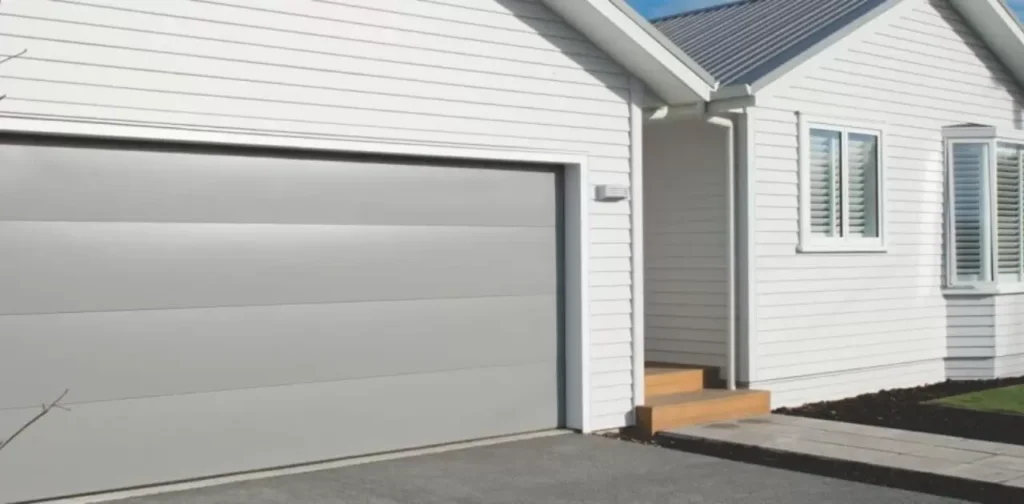
Garage doors are an investment, but they can also boost your home’s value. Here is a rough guide to costs:
| Material | Average Cost Range |
| Steel | $500 – $2,000 |
| Wood | $1,000 – $5,000 |
| Aluminum | $1,500 – $3,000 |
| Fiberglass | $1,500 – $3,000 |
| Vinyl | $1,000 – $2,500 |
Remember to factor in installation costs, which can range from $200 to $500 or more.
Making the Final Decision: Putting It All Together
Choosing a garage door is like putting together a puzzle. You’ve got all the pieces – now it’s time to see the big picture.
Recap of Key Factors to Consider
- Style: It does complement your home
- Material: It is suitable for your climate and budget
- Insulation: It helps with energy efficiency
- Safety: It Does have the necessary safety features
- Maintenance: You prepared for the upkeep
Creating a Decision Matrix
Create a simple table with your top choices and rate them on factors important to you. It might look something like this:
| Door Type | Style (1-5) | Durability (1-5) | Cost (1-5) | Total |
| Option A | 4 | 5 | 3 | 12 |
| Option B | 5 | 3 | 4 | 12 |
| Option C | 3 | 4 | 5 | 12 |
Getting Quotes and Comparing Options
Get at least three quotes from reputable dealers. Don’t just look at the bottom line – consider the warranty, installation process, and after-sales service.
Conclusion
Choosing the right garage door for your home is not just about picking something that looks good (though that is important too!). It is about finding a door that fits your lifestyle protects your property and maybe even saves you a bit on your energy bills.
Remember a garage door is more than just a big moving wall. It is a key part of your home’s security energy efficiency and curb appeal. Take your time do your research and do not be afraid to ask questions. After all you will be living with this decision for years to come.
So go forth and choose wisely! Your perfect garage door is out there just waiting to make your home safer more efficient and more beautiful. You might just end up with the best-looking house on the block.
Frequently Asked Questions
How often should I replace my garage door?
With proper maintenance a good quality garage door can last 15-30 years. If you notice significant wear and tear, decreased energy efficiency or outdated style. It might be time for a replacement sooner.
Can I paint my garage door?
Yes, most garage doors can be painted. The process varies depending on the material. Steel and wood doors are the easiest to paint, while vinyl doors may require special paint. Always clean the door thoroughly and use a primer before painting.
Are smart garage door openers worth the investment?
Smart garage door openers offer convenience and enhanced security features like being able to close your door remotely if you forget. If these features align with your lifestyle and budget they can be a worthwhile investment.
How can I increase the security of my garage door?
To boost security, consider installing a smart opener, using a deadbolt and ensuring your door has tamper-resistant brackets. Regular maintenance also helps prevent weak points that could be exploited.
What is the most energy-efficient type of garage door?
Insulated steel or aluminum doors tend to be the most energy-efficient. Look for doors with high R-values, especially if your garage is attached to your home or you use it as a workspace.
Can I install a garage door myself?
While it is possible to install a garage door yourself, it’s generally not recommended unless you have significant DIY experience. Garage doors are heavy, under high tension, and can be dangerous if not installed correctly. Professional installation ensures safety and often comes with a warranty.
How do I know if my garage door springs need replacing?
Signs that your springs need replacing include a loud bang when the door operates, visible gaps or stretching in the springs or if your door falls faster than usual when closing manually. If you notice these signs call a professional immediately as spring replacement can be dangerous.
